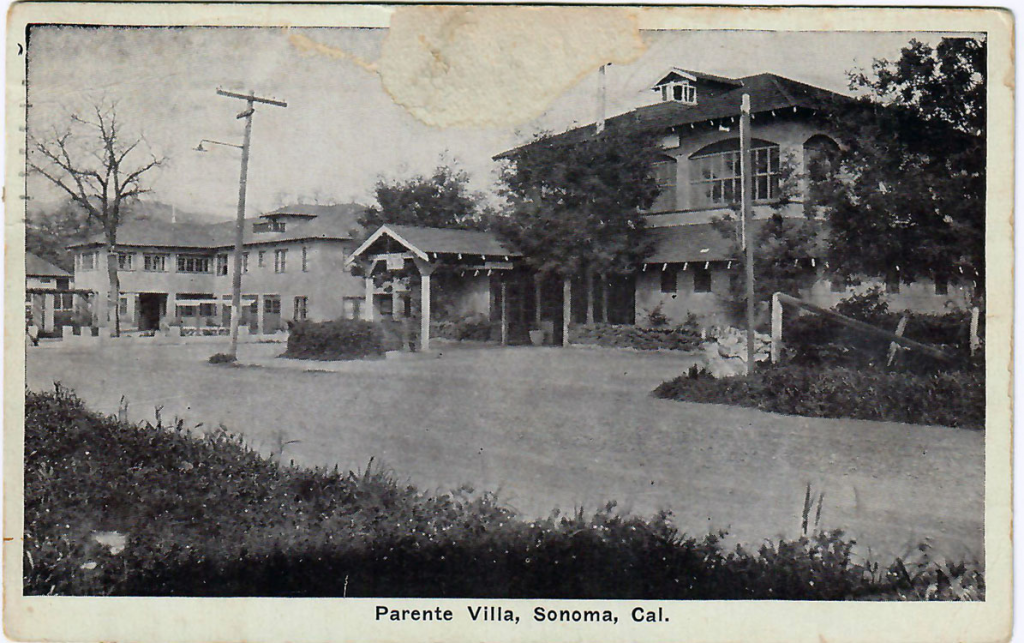A few years ago I went to a Toltec “Summer Celebration” weekend retreat. I have attended these kinds of events several times in the past few years, and always come home with a new understanding of something that I didn’t realize I didn’t understand. This was to be the case again.
I managed to get tied up in traffic on the way to the retreat center, so showed up a bit late – and was told that I should join the ongoing “men’s group” taking place on the grass near the dry creek near the meeting rooms. I usually avoid “men’s group” activities because I find that they are often too exclusionary and unbalanced in their approach and discussions. However, in the spirit of participating in whatever came my way for the weekend, I joined and participated as much as I could without dominating the conversations (one of my personal faults).
The main points being discussed were how we came to our personal understanding of what it means to be a man. There were a lot of interesting stories of growing up with stern fathers, absent fathers, weak fathers, and fathers like mine who participated, but with a very clear separation of male-female roles. I explained that I learned a lot about how to be a “man” from my mother. She would take the time to discuss the topic and to point out examples of what she meant. I found this quite helpful since my father was not one for talking about anything personal. He would talk freely about all sorts of “man things” such as fishing or boat building, but not about how he felt unless it was when he was in a rage, and all that came across then was that he was angry.
I found the stories to be interesting, but not particularly captivating, so I just sat back and let my mind wander. It wandered to a place of new insight. As I sat on the grassy hill in the shade of an oak tree, I slowly came to understand that I was taught that there is a clear-cut, and strict, demarcation between men’s and women’s responsibilities with regard to family life and relationships. Men work and bring home the money. Men do the “manly chores” involving tools and heavy labor. They are also the ultimate disciplinarians. Mom would say things like, “if you don’t do so and so I will tell your father when he gets home.” The threat of stern action and possible violence was obvious. This rarely occurred because the threat worked for me. Women tend the yard, fix the meals, take care and play with the kids, socialize the kids, deal with kids and school issues, keep track of household budgets, and bring whatever beauty there is into the house. The list of male and female tasks is quite long, but had very little overlap in my family.
As I sat there thinking about this and my relationship with my wife and children I realized that I had agreed with it implicitly. What I had been taught was so obviously true that it didn’t even rise to the point of requiring consideration or discussion. How else could it be? Listening to the other men in the group describe their upbringing made it clear that there are an infinite number of ways that it could be, my way was just one in a sea of possibilities.
I have always felt that I had somehow transcended my strict male-female role upbringing. I do many things that my father categorized as “women’s work.” This includes things like changing diapers (although I avoid this with my grandsons), washing dishes, ironing clothes, food shopping, cleaning toilets, etc. I also do the manly tasks of making the bulk of the family income, working on cars, cutting firewood, mowing lawns and building fences. Because I find myself doing these “cross-gender” tasks, I felt that I was somehow a “liberated” man – and my wife is a liberated woman because she also shares by doing many of the “manly” tasks. We were a balanced family, each sharing the tasks as they came up.
However, as I sat and looked more closely at my life, I came to understand that while I did these womanly tasks, I did them to “help” my wife with her work. I did them, but I didn’t “own” them. They weren’t my jobs; they were her jobs. I was generous enough to assist, but expected a “thank you” in return and maybe even a little bonus such as a special meal, back rub, or some personal time off. When she helps by doing the male tasks, I felt the same – she was doing me a favor and needed a special “thanks” or something in return – often in the form of an exchange of tasks.
How odd I thought; all of these years I had been thinking that I was sharing the tasks with my wife, only to find out that I was just helping out. In reality I was still following and agreeing with the divisions that my parents had taught me in the early 50’s based upon what they had been taught when they were young during the ‘20s.
It became clear to me that the tasks to be done are both of ours, not hers and mine unless we have specifically decided to divide some for our own personal reasons. I feel like I have shifted my understanding of the male-female roles in our family, but will have to wait and see how much has actually changed and how much remains the same. I don’t know if I will be able to shift my point of view and fully take on the jobs as truly shared responsibilities, but I do know that I will now recognize them as old agreements when they come up. At least I am now in a position to better see and understand what I am doing when I am doing it.
These revelations brought an understanding of my intent for the weekend into clear focus. I realized now that for me the purpose of the weekend retreat was to explore the relationship between my wife and myself, to get a better understanding of how we interact and what expectations I bring to our marriage. I got a vague understanding of this purpose as I said goodbye to her on Friday morning. It seemed that her attitude was one of resentment and feeling that I was doing something very selfish to leave her at home for the weekend while I went off to play with my Toltec friends. There was of course some truth to this judgment, but there is also the truth that I am trying to find my path in my life, and share what I find with her. While I am being selfish with my studies, I also see that what I am learning is helping our relationship in many ways – hopefully, there is also a mutually beneficial aspect to my studies.
When “breakout sessions” were announced on the following day, I elected to join a group that was discussing relationships, including marriages. The group was composed of couples, and myself. I was a “couple” in my mind that weekend since I was specifically focused on that issue.
The group started off a little slowly with everyone wondering what to say and how to start. I decided to bring up my concern of the weekend, which was that I was being confused about how to follow my spiritual path while maintaining a solid relationship with my wife, considering that her preference is to not join me in my “fun and games” in group work. I honor her desire to not join me (maybe in large part because she doesn’t want to interfere with what I am doing), knowing that she is progressing along her path side-by-side with me in her own way. However, I have problems with feeling guilty about leaving her behind, and that she lets me know that it is her opinion that I am being selfish in doing so.
The first response to my concern was from a guy who I had judged to be a silent watcher, rather than a talker. He told me that it sounded to him like we didn’t communicate enough. He described a process that he and his wife do once a week. He called it their “sacred hour.” The crux of it is that once a week they set aside an hour to be with each other. One person talks for 20 minutes, uninterrupted by the other; then they switch; then they dialogue about whatever comes up for the final 20 minutes. He said it was a powerful tool for allowing each to think of what they want to say to the other, and the other to just sit back and listen without having to think of a response.
The leader of the group then made the recommendation that when I get home to ask my wife what she did while I was gone. My immediate reaction is that of course I would do that, I always ask her about what she did while I was gone. However, in this instance I just accepted that recommendation and waited to see what else would unfold during the weekend. There were a lot of other events of interest, but no more that seemed to specifically address my concerns.
On the way home I continued to think about communicating and letting my wife tell me what she had done, rather than trying to have a discussion with her. I remembered all of those times when people have exclaimed how important it is to “listen,” “listen actively,” “pay attention” and other phrases indicating that there was some way to listen “harder” than I normally do. I have never been able to figure out how to do that because I already listen as hard as I can. I try to hear what is being said, try to line it up with my experiences so I can maybe “feel” what it feels like to be saying what they are saying and try to figure out how to respond in a meaningful and compassionate way. I don’t know how to do this any harder, or with more intent.
Then it dawned on me. I realized that I was listening so “hard” that I wasn’t listening at all! My normal listening style is that I let the speaker talk a little bit until I think I understand where they are headed (which is often correct, but also often incorrect). Then I start thinking about myself in an attempt to find something in my life that is similar so that when I respond it is with empathy and understanding. At that point I kind of stop listening carefully, rather I begin thinking (about myself). My wife often tells me how rude this is, but I don’t get it because I am trying my hardest to be the total opposite of rude, I am trying to be attentive, empathetic and compassionate. It seemed what is missing is honor and respect, honoring the other by allowing them to fully express themselves before I once again start thinking of myself.
I decided to try an experiment when I got home. I decided to hold the image of honoring my wife while letting her explain to me what she had done and how her weekend went. I decided not to try to do anything, just honor her. When I got home, she spent a couple of hours telling me about her weekend; I spent a couple of hours just letting her talk about all that had gone on. When she seemed satisfied that she had said what she wanted to say, I asked if she would be interested in hearing about my weekend – which she was. I told her about the important things that had transpired and then we just talked for a bit. It felt like all of the anger, jealousy and disrespect had melted away from her, and the guilt had gone from me.
I then got one of the shocks of my life. She said that I had just done one of the most romantic things that I had ever done for her!!! Romantic? Wow, that was the last thing that I thought I was doing. I thought I was just honoring her as an equal, a partner and a friend. In fact, it immediately turned my entire understanding of the term “romantic” on its head. I have always thought that being romantic was something I had to work at, but never had a clue about how to do it. I would buy flowers, candy, take my lady friends to dinner and a show, all in the hopes of being “romantic.” I was confused because none of these things seem to end up being “romantic.” Fun – maybe. Flattering – possibly. Expensive – usually. Romantic – never. The romantic thing seems to be to honor a woman by letting her express herself, and then to respond to her, rather than to myself. This seems simple enough, but I apparently missed the point for the past sixty or so years.
Since then I have been remembering to keep my mind in a place of honoring those that I am talking to, and find that it feels so much better. It takes the work out of listening, letting me just enjoy them and respond in ways that are guided by them. Of course, I still slip up now and then, finding myself back in my old habits – but I notice them and try to just relax and let it be.


